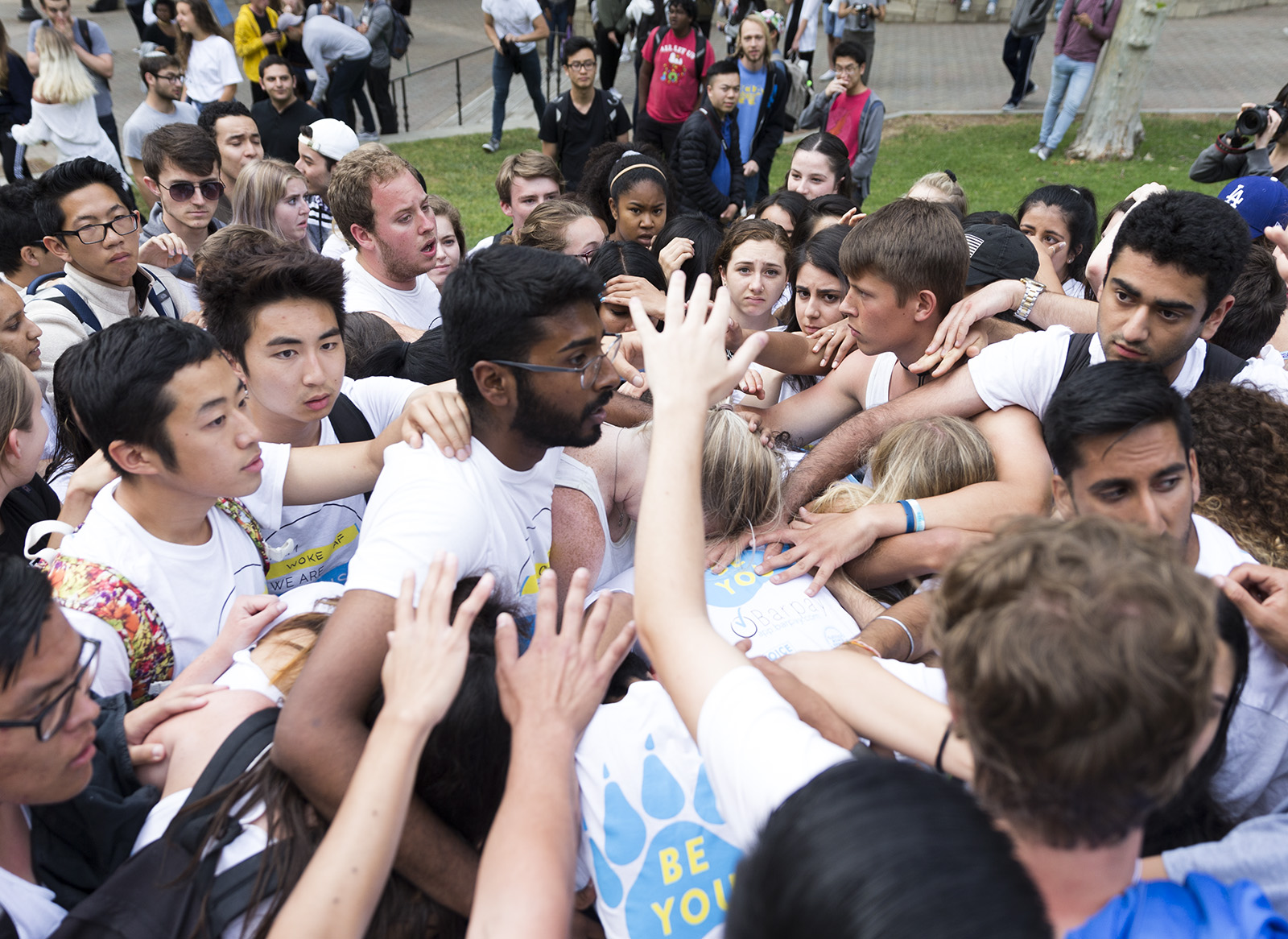Abhishek Shetty: USAC would benefit from simpler, transparent voting system

During Undergraduate Students Association Council elections, candidates for general representative positions are elected through a convoluted tabulation system that few students know about. (Daily Bruin file photo)
By Abhishek Shetty
Feb. 27, 2018 3:09 a.m.
In the hysteria and insanity that engulf every year’s undergraduate student government election, one detail goes unnoticed: how big a role a labyrinthine system plays in determining the council’s general representatives.
The Undergraduate Students Association Council completed appointments to the Election Board in January. The board has expressed the intention to increase the accessibility of USAC elections to students. One important area has been missing from the conversation: reforming the system used to elect general representatives.
When four or more candidates are running for general representative, voters have to choose their top-three candidates and rank their choices according to their preferences. The ultimate winners are decided according to a system that involves redistributing votes in a manner that few students know about. Consequently, candidates who might have been elected at the end of a standard vote tally end up missing out on a seat at the council table.
To make the USAC elections fairer – and more importantly, understandable – to the student body, the Election Board needs to reform how the general representatives are elected. The system should be replaced with one that is simpler and more transparent – in which votes are weighed depending upon ranked preference.
As it stands, general representatives are elected based on a single transferable vote system. This entails voters ranking candidates based on first, second and third preferences.
First, all candidates are allotted votes according to the number of voters who listed them as their first choice. If any single candidate goes past a certain quota of first-preference votes, they are automatically elected as a general representative and their vote count stops. The Election Board calculates this quota based on a formula dictated by the election code.
Following that, the second-preference choices of voters whose first-preference votes have gone to an already elected candidate are allocated toward the candidates they ranked second. These reallocated votes carry the same weight as first-preference votes.
Once all the votes have been redistributed, the next round of this arcane system begins. The candidate with the fewest first-preference votes is eliminated from the race. Those who named this candidate as their first preference have their votes reallocated to the candidates they ranked second. Once again, if any candidate goes past the quota during this reallocation, they are elected. Then another reallocation happens to these voters of lower-placed preference, as long as this next preferred candidate hasn’t been elected or eliminated already.
This process continues until only three candidates remain. These three become the next general representatives.
This redistribution isn’t openly visible to the student body, like it is at UC Berkeley, where its Election Board shows students exactly how the redistribution occurs. UCLA’s convoluted redistribution system only obscures what should be a transparent election process, especially considering not many students even know this system exists, much less how it works.
Moises Mizrachi, a second-year international development studies student who voted in the 2017 USAC election, said he didn’t know how exactly this complex tabulation system for general representatives worked. Abigail Yohannes, a second-year biochemistry student who also voted in the 2017 election, said she thought the tabulation system just involved translating rankings into raw votes.
And they aren’t to blame. Aside from a couple of paragraphs on page 36 of the USAC Election Code, there’s no other place where this system is explained.
Even Jack Price, the Election Board chair, called the current tabulation system byzantine for a student government election.
And this system has changed results from what they would have been under a system where ranked preferences translated into weighted votes.
Shubham Goel, a candidate for general representative during the 2016 USAC Election, finished among the top three of voters’ first choice preferences. However, following a redistribution of the votes that favored the candidate who finished last in the first round of the tabulation, Inan Chowdhury beat out Goel to take third place.
Such a system that doesn’t distinguish between a first-ranked preference and a second-ranked preference can potentially discourage students from taking part in the election process at all.
In the upcoming weeks leading to the USAC election, the board needs to seriously consider amending the election code to implement a simpler system. Students should instead be able to provide differently weighted votes to their top three candidates. For example, a student’s first-preference candidate should receive four votes, the second preference two votes and the third preference one vote. The three candidates with the most votes should then become the next general representatives.
This would allow students to adequately reward the candidates they rank higher, instead of equally weighing each of their preferences. Most importantly, it would be easy to educate Bruins about such a system. The Election Board would simply have to add a short description next to the general representatives section of the ballot, mentioning how each ranking translates to a weighted vote.
Implementing a proportional vote system might sound too simplistic, but the fact that so many students are unaware of the current system is itself major issue. And it’s unlikely the Election Board could successfully educate a majority of the student body about this current convoluted system.
Election to a USAC office should be based upon competence and leadership. And while this might not always be the case, the election should definitely not depend upon a seemingly arbitrary redistribution system.

